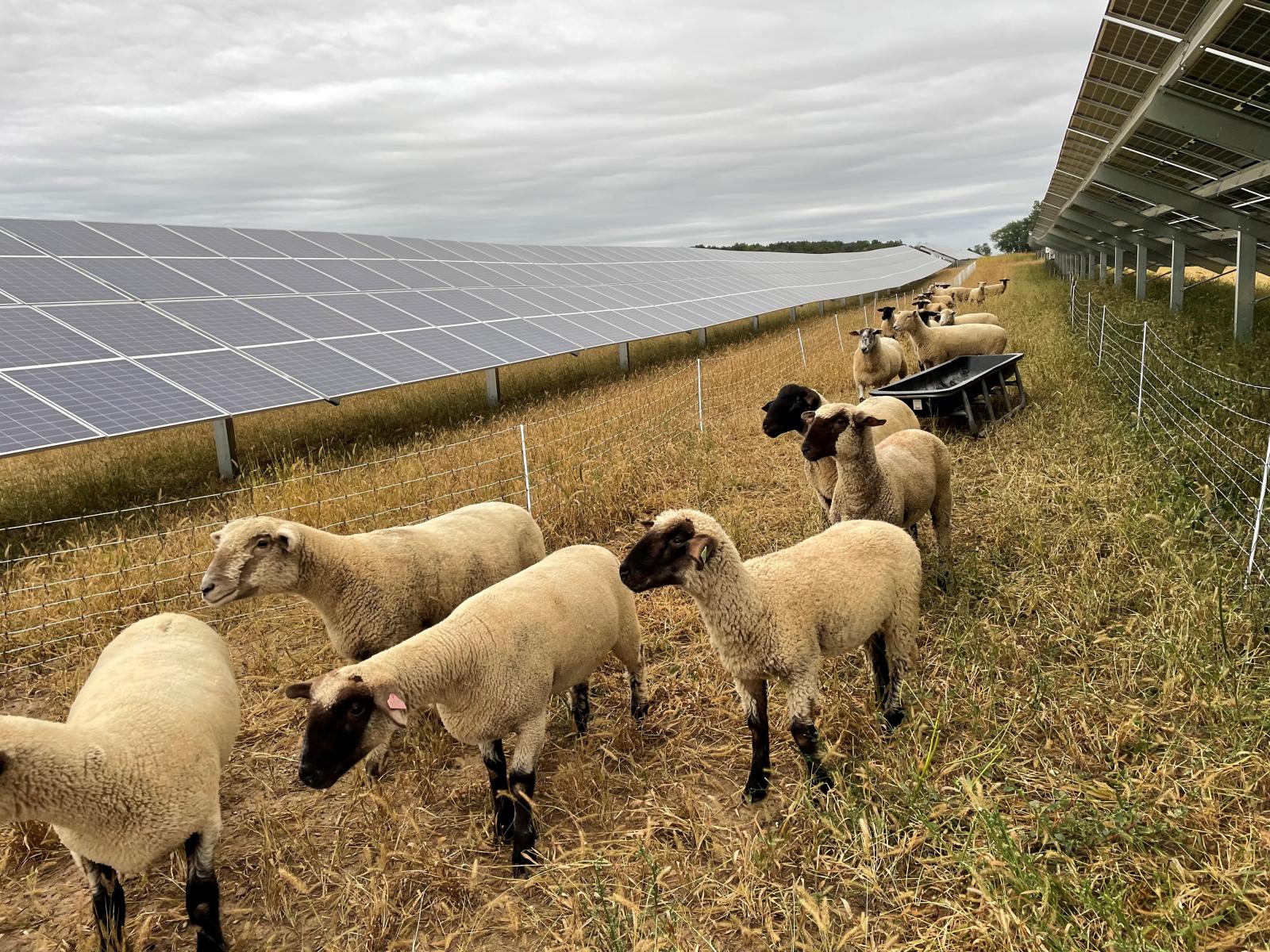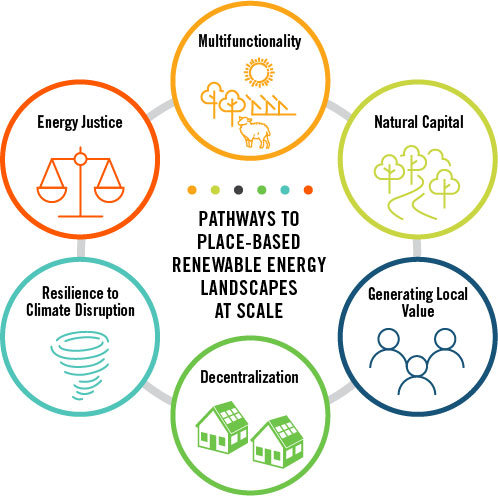Envisioning Renewable Energy Landscapes
An emerging research area is placing communities at the center of the clean energy transition

The sheep at Herbrucks Organic Poultry Ranch are controlling weedy species to prepare the site for a solar pollinator planting.
(Photo by Sharlissa Moore | Pacific Northwest National Laboratory)
Meeting the nation’s ambitious clean energy goals will require renewable infrastructure to be deployed at vast scales. At the same time, infrastructure is a long-term set of technologies shaping and impacting landscapes for decades, and communities have an essential voice in shaping the clean energy transition and their landscape futures.
What if renewable energy infrastructure could be designed to complement the landscape and enrich the lives of surrounding communities?
Rebecca O’Neil, electricity infrastructure advisor at Pacific Northwest National Laboratory (PNNL), in collaboration with landscape architects Yekang Ko at the University of Oregon, Nicholas Pevzner at the University of Pennsylvania, and Kirk Dimond at the University of Arizona, are reimagining the future of energy infrastructure as multifunctional, resilient, and just investments that contribute to a community’s quality of life beyond a reduction in carbon emissions.
Imagine a solar array that provides shade in a neighborhood park, or helical wind turbines that double as art installations, or the space underneath transmission towers or wind turbines being used as pollinator-friendly native gardens.
O’Neil, Ko, Pevzner, and Dimond describe this vision in a recently published white paper that explores six distinct pathways for deploying place-based renewable energy infrastructure at scale.

"Traditional technology pathways look to cost reduction or efficiency gains. We need more strategies to engage local, social, and cultural goals to achieve the greatest outcomes from the clean energy transition," said O'Neil. "And that will require more people contributing imagination, creativity, and new approaches to design and planning."
Renewable Energy Landscapes is an emerging research focus area developed under the U.S. Department of Energy’s (DOE's) Energy Technology Innovation Partnership Project (ETIPP) and sponsored by DOE’s Water Power Technologies Office. This unique research is one of the avenues PNNL is employing to ensure the clean energy transition is a just and equitable one.
The work was inspired after O’Neil read a Landscape Architecture Magazine article written last year by Ko, Pevzner, and Dimond about the potential for landscape architecture to offer a valuable framework for a successful clean energy transition.
“When I read the article I realized they had an entirely new way of thinking about clean energy futures—one that was positive and integrated environmental performance upfront,” said O’Neil. “We learned that the landscape architecture discipline rarely engages energy, and so their conviction about the potential to combine disciplines would be new for their technical community as well.”
To facilitate this work, PNNL established a joint appointment with Ko, who is well known for her role in international technical associations and has worked in partnership with PNNL across renewable energy projects for several years. Joint appointments allow PNNL to bridge technical gaps critical to the growth of several high-impact research areas.
Later this year, PNNL will co-host two separate virtual workshops in Arizona and Oregon exploring opportunities and constraints of deploying place-based renewable energy solutions in the Southwest and Northwest regions, respectively. Additionally, the University of Arizona in partnership with PNNL will launch a student design competition soliciting designs that illustrate holistic landscapes that fulfill both future energy system goals and community aspirations.
Once confirmed, the dates for the workshops and submission guidelines for the student design competition will be available on PNNL’s Renewable Energy Landscapes website.
Published: August 1, 2022